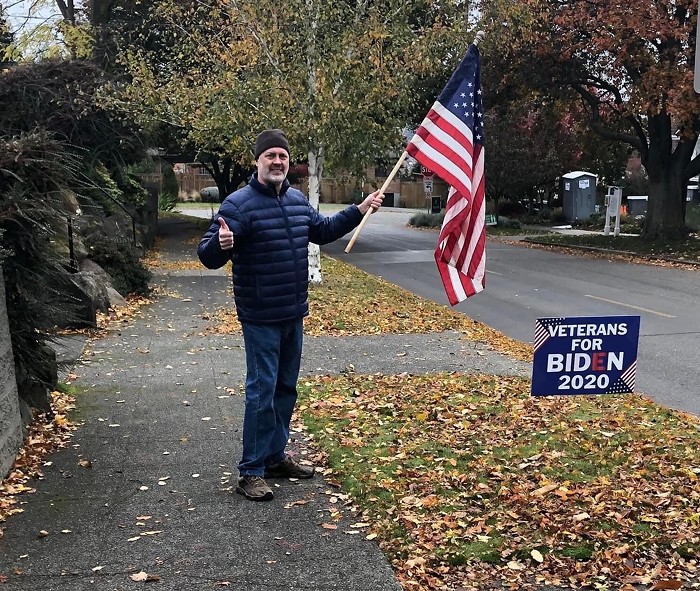
Seattle activists fighting density in their neighborhoods—I wouldn't dare call them NIMBYs—won a temporary but significant victory today.
The city's hearing examiner has ruled that the city must do more environmental review before making it easier to build backyard cottages in single-family neighborhoods. With this ruling, the hearing examiner is siding with the Queen Anne Community Council, which has argued that allowing more small apartments in neighborhoods like theirs will have negative effects on parking and utilities and will encourage developers to bulldoze houses and replace them with several units instead.
The case—eyebleedingly wonky in its details—underscores a central fight over the future of Seattle: Will the city protect traditionally sacred single-family neighborhoods? (Zones that make up a large portion of the city and in which many homeowners have seen their property values skyrocket as renters have been forced out of the city due to rising costs.) Or will city officials, recognizing a housing crisis on their hands, change the way we treat those single-family neighborhoods? Will they open them up to new types of buildings that can house more people?
When Mayor Ed Murray convened a big task force on housing affordability last year, one of that group's central recommendations was to open these parts of the city to more multifamily housing. Seattle should allow duplexes, triplexes, and backyard cottages in areas that are now limited only to single-family homes, the group recommended.
In response, some neighborhood activists freaked out. And in a matter of days, Murray and some city council members frantically backtracked, announcing they wouldn't pursue allowing new types of housing in single-family areas after all. But then Council Member Mike O'Brien tried again for the backyard cottages idea.
While those units (also called accessory dwelling units) are already allowed in single-family zones, rules like parking requirements and size limits mean not that many of them have actually been built. So, O'Brien proposed new rules to reduce parking requirements and increase size limits for the cottages, hoping to encourage more people to build them and thereby increase Seattle's supply of housing.
As part of that process, the city's planning department decided those changes wouldn't have significant environmental impacts. (Their reasoning: The legislation wasn't about a specific project, just about changing the rules for future projects.)
The Queen Anne Community Council wasn't having it. The group sought to derail the legislation, arguing the rules would in fact have significant impacts. (The group claims it's not against all backyard cottages.)

The argument over this whole thing took place over several days this fall in a bleak conference room on the 40th floor of the Seattle Municipal Tower, where neighborhood representatives accused the city of glossing over their concerns in order to push a pro-density agenda. (The idea that Seattle's political leadership is actually radically increasing density across the city in a meaningful way is laughable to most urbanists, but neighborhood groups see this differently.) The Queen Anne Community Council argued that the same city employees charged with determining whether the backyard cottage law would have a significant impact were responsible for spinning a positive image for the proposal. And they said that by not requiring backyard cottage builders to permanently live on site, the city would be inviting developers to tear down houses and build two or three units in their place, displacing vulnerable people in the process. Read more about their case here. (If it seems a bit rich to you that homeowners in Queen Anne, which leads the city in home price increases, staked their case here on supposed concern about poor people, you're not the only one.)
In today's decision, the hearing examiner agreed with the group's concerns about property speculation, writing that “the indirect impacts of the legislation would adversely affect housing and cause displacement of populations."
Hearing Examiner Sue Tanner also found that renderings created by the city didn't really show the "height, bulk, and scale impacts" of allowing more backyard cottages and that the city didn't do enough to study the impacts of removing parking requirements. (Dig into the whole decision here.)
So what does all this mean? The new backyard cottage rules will be bogged down in more bureaucratic process for at least several months.
The city has three weeks to decide whether to appeal the ruling, go ahead with an environmental impact statement (which will take months), or try to rewrite the legislation (which would likely just get challenged again by the Queen Anne Community Council). O'Brien said in a text message that his office is "taking a look at the decision and weighing our options."
That delay means renters will be without these new units of housing. It means homeowners who want to build and rent out backyard cottages—"dozens" have contacted O'Brien's office awaiting news about the new rules, according to his legislative aide—won't be able to do so. And it means Seattle's single-family zones, outdated and exclusionary by their very nature, will remain so for the foreseeable future.


















